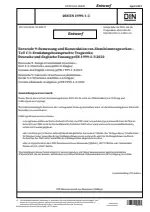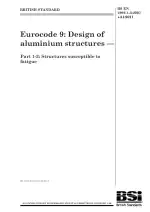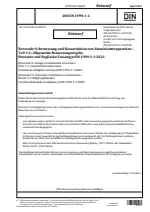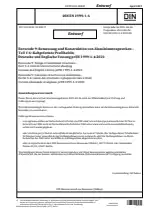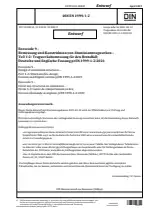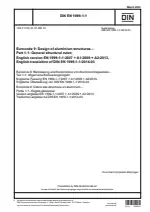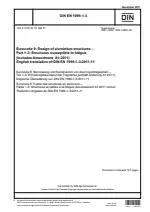Eurocode 9: Design of aluminium structures - Part 1-3: Structures susceptible to fatigue
Also Known As:
EN 1999-1-3, part of the Eurocode 9 standard, focuses on the design of aluminium structures that are susceptible to fatigue. This standard complies with the principles and requirements for safety, serviceability, durability, and fire resistance of these structures. It does not consider requirements related to thermal or sound insulation. EN 1999-1-3 is designed to be used alongside other codes such as EN 1990 (Basis of structural design) and EN 1991 (Actions on structures). Additionally, it should be used in conjunction with European Standards for construction products relevant to aluminium structures and the requirements set out in EN 1090 (Execution of steel structures and aluminium structures).
The standard provides rules for safe life design, damage tolerant design, and design assisted by testing. It is important to note that EN 1999-1-3 does not cover pressurised containment vessels or pipework. To ensure design assumptions are met during the execution of components and structures, it should be used alongside EN 1090-3, which contains the necessary requirements for execution.
| Descriptors | Accident prevention, Aluminium, Aluminium alloys, Aluminium construction, Buildings, Construction, Continuity tests, Defects tolerances, Definitions, Design, Dimensioning, Eurocode, Fatigue, Fatigue analysis, Fatigue behaviour, Fatigue of materials, Fatigue strength, Life (durability), Mathematical calculations, Mechanical properties, Safety requirements, Strength of materials, Stress, Structures, Testing, Thermodynamic properties, Vibration, Voltage, Fatigue tests, Trusses |
| ICS Codes | 91.010.30 - Technical aspects 91.080.17 - Aluminium structures |
| Language(s) | English + German |
| File Size | 9.6 MB |

